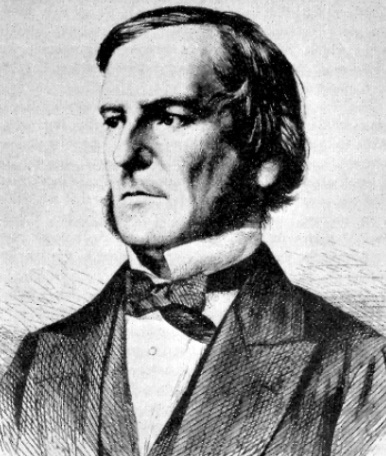
George Boole was born on November 2, 1815, into a family of modest means, in Lincoln, Lincolnshire, England. His father was a shoemaker who made and repaired shoes for members of the community, but the business earned barely enough to support their family, consisting of two parents and 4 children. Since there were insufficient funds to enrol him in the best schools, George, between ages 7 and 14, attended commercial schools that offered a very limited range of subjects . However, his education was supplemented by instruction in mathematics, that he received from his father, and tutoring in Latin from a local bookseller. Although George retained his interest in mathematics through his early years, his main education during this period was in languages. From books, he taught himself Greek and later, French and German.
In 1831, the family shoemaker business collapsed and George took a teaching job at Heigham’s School in Lincoln to support the family. During this time, he continued to study mathematics from any books he could borrow from friends and associates. Working relentlessly over a five-year period from the classic text, Traité de calcul differéntial et du calcul intégral by Lacroix, he was able to develop a mastery of calculus.
In 1834, Boole, at age 19, founded his own private school, Free School Lane, and by 1838 he had acquired Hall’s Academy in Waddington. The Booles moved to Waddington, where the entire family became engaged in the task of running the school. In addition to his work at Hall’s Academy, George continued to study the mathematical works of Laplace and Lagrange. By 1840, he was developing his own independent discoveries and began publishing papers in the Cambridge Mathematical Journal. His first paper, titled Researches in the theory of analytical transformations, with a special application to the reduction of the general equation of the second order, appeared in the journal in February of that year. The following year, Boole published a paper in invariant theory that became one of the standards in that field of research. Then, in 1844 he published On a General Method in Analysis in which he analyzed solutions to linear differential equations in which the coefficients are variables, and for this he received a medal from the Royal Society.
George Boole’s most significant contribution was the development of what is now known as Boolean algebra. In his books “The Mathematical Analysis of Logic” (1847) and “An Investigation of the Laws of Thought” (1854), he introduced a system of mathematical symbols and operations that could represent logical statements and their relationships. Boole’s work on symbolic logic and Boolean algebra greatly influenced the development of computer science and information theory. His algebraic system allowed for the manipulation of binary values (true and false), which is fundamental to digital circuit design and computer programming.
Through the 1840’s, Boole’s reputation in the mathematical community continued to grow, and in 1849 he was appointed as the first professor of mathematics at Queen’s College Cork in Ireland. The following year, he met Mary Everest, who was a niece of the famous British surveyor and geographer George Everest, They were married in 1855 and together they had five daughters, one of whom, Mary Ellen, went on to become a noted mathematician in her own right..
In late November 1864, George Boole walked two miles in heavy rain from his residence to the College and delivered a lecture in sodden clothes. According to reports, this was the cause of a virulent cold that became pneumonia and grew steadily worse. On December 8, 1864, George Boole died of pleural effusion at the age of 49.
George Boole’s work continues to be influential and is a cornerstone of modern computer science. His Boolean algebra is widely used in the design and analysis of digital circuits, as well as in computer programming, making him one of the key figures in the history of mathematics and logic.
Reflecting on the sequence in the development of concepts that populate the field of mathematics, Boole once asserted: I presume that few who have paid any attention to the history of the Mathematical Analysis, will doubt that it has been developed in a certain order, or that that order has been, to a great extent, necessary — being determined, either by steps of logical deduction, or by the successive introduction of new ideas and conceptions, when the time for their evolution had arrived.
